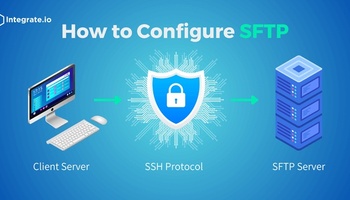Introduction
When it was revealed in September 2017, the massive Equifax data breach made international headlines. As one of the three major credit agencies in the United States, Equifax is responsible for processing personally identifiable information (PII) such as individuals’ names, addresses, and social security numbers. According to Equifax, 143 million people were affected by the data breach, making it one of the biggest cybersecurity disasters in history.
Unfortunately, in the years since the Equifax data breach, far too many organizations are still too lax about their handling of personally identifiable information. PII data breaches are becoming more common than ever before, and they can have devastating long-term financial and reputational effects.
The good news is that by following just a few data security best practices, you can significantly lower your risk of a PII data breach. Below, we’ll go over five simple steps to protect yourself from attackers and keep your data safe.
1) How to Protect Yourself from PII Data Breaches
2) How Integrate.io Can Help Protect Your PII
How to Protect Yourself from PII Data Breaches
1. Bolster Physical Security
When you hear the term “data breach,” you might think of a nefarious actor hacking into your network from afar—but insider threats and physical attacks pose a much greater concern than many people realize. According to a 2021 survey by Pro-Vigil, roughly 20 percent of business operations leaders say that they experienced more physical security incidents than in the previous year. A third of respondents said that they expected to see an upcoming increase in incidents as well.
Physical IT security seeks to prevent individuals from tampering with and/or gaining unauthorized access to your IT infrastructures, such as hard drives, servers, and mobile devices, which can lead to a data breach. Make sure to enact a robust access control policy that may include multiple forms of defense: guards, video cameras, restricted areas, passwords, ID scanners, and biometric methods such as fingerprint or voice identification.
2. Know the Rules
Depending on your organization’s industry and jurisdiction, you may be governed by one or more laws and regulations concerning data privacy and security. Below are just a few of these regulations:
- The General Data Protection Regulation (GDPR), which applies to any organization that processes the personal information of European Union citizens and residents.
- The California Consumer Privacy Act (CCPA), which applies to organizations that handle the personal data of California residents.
- The Health Insurance Portability and Accountability Act (HIPAA), which applies to health care providers and health plans that process medical records.
- The Family Educational Rights and Privacy Act (FERPA), which applies to schools and educational institutions that receive funds from the U.S. Department of Education.
These laws and regulations enact strict limits on how a given party is allowed to collect, store, and process sensitive PII. Simply bringing your organization into compliance with the applicable regulations will go a long way in protecting yourself from a PII data breach.
3. Establish Solid Data Governance
The term “data governance” refers to an organization’s internal framework for making decisions about data management. Data governance encompasses multiple elements, including:
- People such as technical experts, auditors, executives, and managers can help advise and make decisions
- Internal policies on matters such as data architecture and data security
- Regulations such as GDPR or HIPAA, as discussed above
- Technology used to implement data governance, including enforcing compliance and generating reports
Establishing a solid data governance framework is essential before implementing large-scale data security measures. If you don’t even know what data your organization is storing, for example, how can you know how to keep it safe from a data breach?
Any data governance framework worth its salt should answer questions such as:
- Which PII does your organization store, process, and handle? What is the sensitivity level of this PII? How appealing might it be to would-be attackers? What would be the consequences for you and your customers if this PII were exposed?
- Which software and technology do you use to store, process, handle, and protect this PII?
- What security policies (physical and IT) do you have in place to protect this PII? For example, do you have access control policies limiting certain types of PII to given users or groups?
4. Use Data Masking
Data masking is one of the most effective ways to protect your sensitive and confidential information when it’s in transit and at rest. There are multiple methods of data masking, including:
- Substitution: Replacing entries in the original dataset with substituted values (e.g. with blanks or Xs, or by scrambling the characters in a word)
- Pseudonymization: Replacing each entry in the original dataset with a unique placeholder token. Pseudonymizing data allows you to reverse the process by storing a lookup table that associates each original data entry with its pseudonymized version.
- Encryption: Encoding information into an unrecognizable format, known as ciphertext. Even if encrypted data falls into the wrong hands, it can only be interpreted or converted into its original contents with the corresponding decryption key.
Data encryption, in particular, is a powerful technique for guarding against the effects of a data breach. For example, the GDPR requires organizations to notify the affected individuals if their personal data is breached—but only if the data had not been encrypted.
5. Create a Data Breach Response Plan
Even if your organization suffers a PII data breach, you can mitigate the damage and get back on track faster by developing a breach response plan ahead of time. The U.S. FTC has a detailed data breach response plan, with actionable items that fall under three categories:
- Secure your operations: Prevent further data loss by reinforcing your physical and IT security. Take the affected equipment and machines offline immediately, and remove PII from websites if it was improperly posted online.
- Fix vulnerabilities: Work with IT forensics experts to understand what happened. Interview people who discovered the breach and who were responsible for data security. Determine if you need to change access privileges to the affected data.
- Notify appropriate parties: Understand your obligations under the appropriate data security regulations. Notify the affected customers or third-party businesses, as well as law enforcement, as soon as possible.
How Integrate.io Can Help Protect Your PII
The past few years have seen an alarming rise in the amount and severity of data breaches, but you can protect yourself by following data security best practices such as the ones we’ve outlined in this article. What’s more, protecting your sensitive and confidential information is even simpler when you’re using a security-conscious data integration solution like Integrate.io.
Integrate.io is a mature, feature-rich ETL platform that helps anyone—regardless of technical ability or background—build enterprise-grade data pipelines to their cloud data warehouse. We offer more than 100 pre-built connectors and data integrations, along with a simple drag-and-drop interface, with multiple no-code and low-code options.
Even better, Integrate.io allows you to define data transformations such as masking, pseudonymization, substitution, and encryption to protect your data when it’s flowing from source to target. Integrate.io uses SSL/TLS encryption, follows best practices for network and physical security, and is fully compliant with data security regulations such as GDPR, CCPA, and HIPAA.
Need assistance safeguarding your sensitive and confidential information? Integrate.io can help. Get in touch with our team of data experts today for a chat about your business needs and objectives, or to start your 7-day pilot of the Integrate.io platform.










